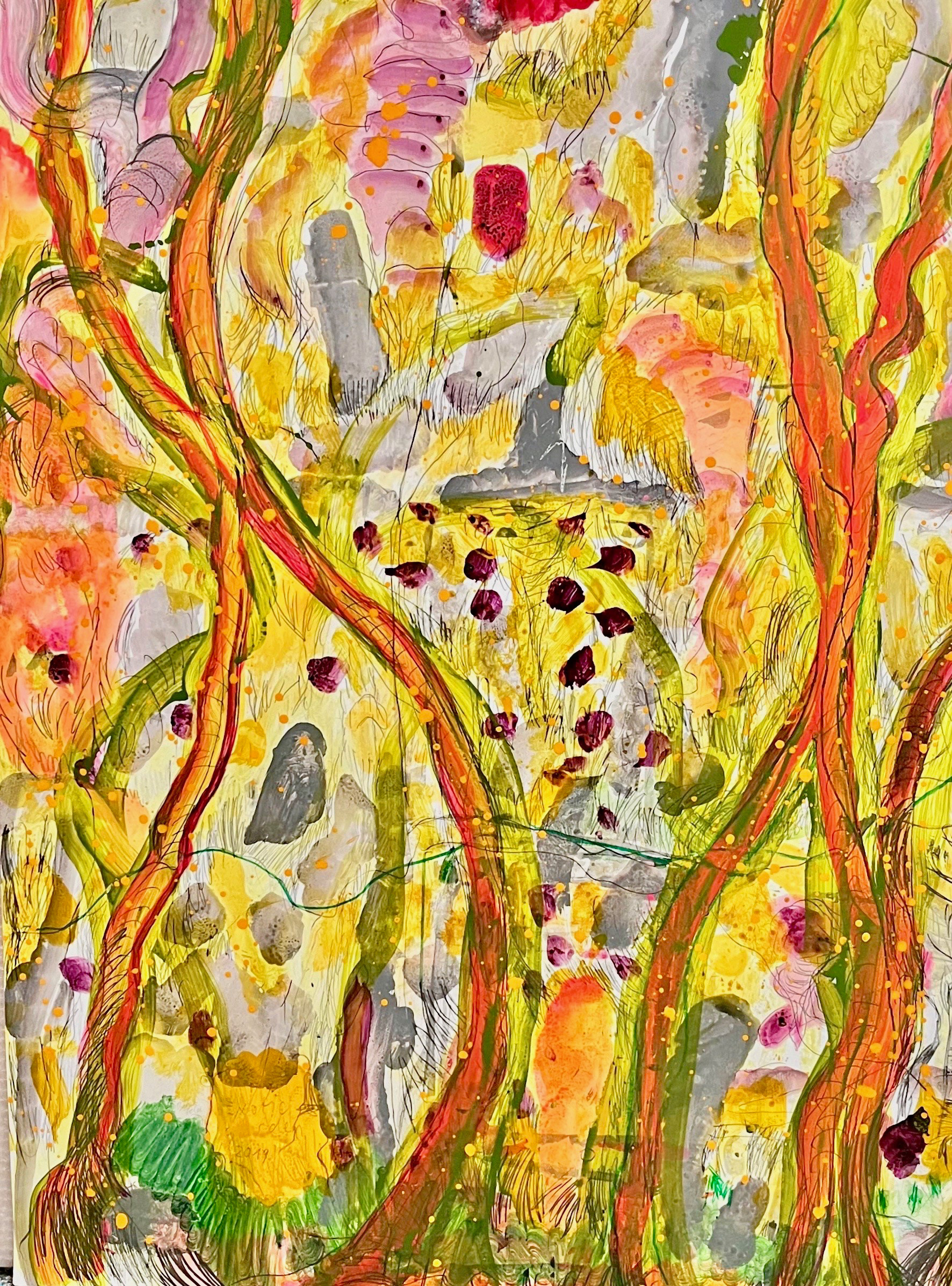10 March - 27 April 2024
Biene Feld, Five Seasons



Left to right:
BF656, untitled (2018), Indian ink, acrylic, paper, 62,5 x 48 cm
BF711, untitled (2019), acrylic, colour pencil, ballpoint, 120 x 90 cm
BF740, untitled (2020), acrylic, Indian ink, paper, 29,7 x 21 cm
BF656, untitled (2018), Indian ink, acrylic, paper, 62,5 x 48 cm
BF711, untitled (2019), acrylic, colour pencil, ballpoint, 120 x 90 cm
BF740, untitled (2020), acrylic, Indian ink, paper, 29,7 x 21 cm
Five Seasons is the title of one of the paintings in our exhibition of works by Berlin-based artist Biene Feld. As we are about to enter Spring, still waiting for the awakening of nature to unfold in all its splendour, Biene Feld's paintings already project us into colourful fields of reds, yellows, greens and blues, connected by lines that flow across the paintings, thus creating a state of endless fluidity. In recent years, the artist's work has become more abstract, focusing on the combination of line, colour and movement to reflect not only the dynamic principles of nature, but also the emotions and memories of the artist.
Biene Feld was born in Greifswald, the city of the German romantic landscape painter Caspar David Friedrich. In a certain way, her abstract landscapes offer a contemporary reflection on Friedrich's statement that the painter should paint not only what he has in front of him, but also what he sees inside himself. Like Friedrich, Biene Feld spends a lot of time in nature, observing the changing lights and shapes, and tending to her beloved garden. She says the transformation of these experiences into paintings unfolds almost unconsciously, creating what I would call a 'fifth season', capturing on paper the energy of nature for the sole purpose of letting it flow.
Biene Feld was born in 1960. From 1980 until 1982, she studied at the Leipzig Academy of Fine Arts (HGB) and, from 1988 until 1995, at the Berlin Academy of Arts (HdK). She lives and works in Berlin. Since 1997, her works have been shown in numerous solo and group exhibitions in Germany, France and Georgia, and are to be found in many collections, both public and private.